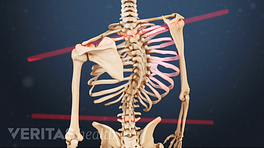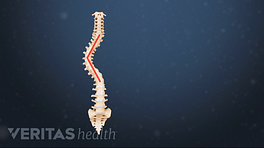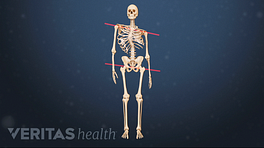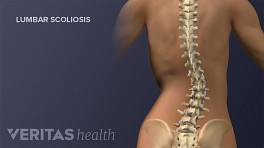After scoliosis surgery, the patient will first awaken while lying on the back, facing up. The patient will be groggy while still under the influence of medications used during and after the surgery.
See Hospital Care After Spinal Fusion Surgery (2 to 4 Days)
Once awake, the patient will be asked some basic questions, such as whether he or she can move the legs and wiggle the toes. These questions are designed to get a sense of the patient’s status and to ensure that the spinal cord was not damaged during surgery.
In This Article:
- Scoliosis Surgery: Postoperative Care
- Scoliosis Surgery: Planning for Postoperative Care at Home
- Scoliosis Surgery Recovery: At the Hospital (4 to 7 Days)
- Scoliosis Surgery Recovery: After Discharge (First 14 Days)
- Scoliosis Surgery Recovery: After Discharge (2 Weeks to 3 Months)
- Scoliosis Surgery Recovery: 3 Months Post-Operation and Beyond
Pain Control in the Hospital
NSAIDs provide anti-inflammatory effects and help calm inflammation and pain in the back.
The patient will still have several attachments, such as monitors and intravenous lines. One of these attachments may be a patient-controlled analgesia (PCA) pump. If the patient starts to experience pain, he or she can press the PCA pump to deliver narcotic medication into the bloodstream and get relief.
By the second day after surgery, most of the attachments, such as IV tubes and drains, are removed from the patient’s body. Within three days after surgery, the narcotic pain medication can be taken orally instead of intravenously.
Before leaving the hospital, the patient will want to have a plan for how to get refills of the oral pain medication at home because new regulations make it tougher to quickly get refills on narcotics. A delay could result in being without the painkiller for a few days, which could lead to pain, reduced activity levels, and a slower recovery.
Incision Wound Care
A large bandage, called a surgical dressing, will cover the incision wound on the back for about the first day after surgery. When changed, it will be replaced by a smaller dressing. A nurse will check the wound every day to ensure it is staying dry and clean.
Showers may not be allowed the first few days after surgery. However, the patient can be given a sponge bath so long as the wound does not get wet.
Starting to Move Around Again
The day after the procedure, most people who have scoliosis surgery are able to briefly get out of bed and walk to a nearby chair with the help of a nurse or physical therapist. Some people take two or three days before feeling up to the challenge of getting out of bed.
See Postoperative Care for Spinal Fusion Surgery
It is normal for the patient to be hesitant or fearful before attempting to get out of bed the first time. The patient will likely be in some pain, as well as tired and possibly dizzy. However, even small amounts of moving around and walking will be important for starting the process of strengthening the back and regaining some flexibility.
See Practical Advice for Recovering from Back Surgery
During these first few days of recovery, medical professionals may need to use a sheet to help transfer the patient in and out of bed. The person will also practice the “log roll” technique of keeping the back straight and bent knees together while rolling into bed without twisting or bending the spine.
What to Eat and Drink
Due to the medications taken during scoliosis surgery, it will be a few days before the stomach and intestines start working again and food and beverages can be consumed. In the meantime, the patient will only be given some ice and/or sips of water.
See Healthy Habits After Back Surgery
Fluids will be given intravenously (IV) during this initial period. Once the doctors confirm that the stomach and intestines are starting to work again, small amounts of solid food can be tried.
See Food for Thought: Diet and Nutrition for a Healthy Back
Tobacco or nicotine in any form is not permitted during recovery because that would increase the likelihood for infection and decrease the chance for a successful fusion.
Ready to Return Home
Before patients are given clearance to leave the hospital and go home, they will have to be able to do the following:
- Get in and out of bed without help. By this point, the patient should be able to use the log roll technique on his or her own.
- Show improvement in walking. The patient must have the ability to walk the hallways and even go up and down a few steps.
- Eat solid foods. Being able to have a bowel movement is a key indicator for whether the patient is ready to leave the hospital. If the stomach and intestines are not functioning normally, the patient will have to remain in the hospital until they do.
- Show no sign of infection. Some signs of infection could include fever, pus at the incision site, unusual swelling, or delayed healing. Anything that indicates an infection would delay the patient’s return home.
Once the patient is deemed safe to leave the hospital, he or she will be given a ride home by a friend or family member. The patient will not be permitted to drive until later in the recovery process.










